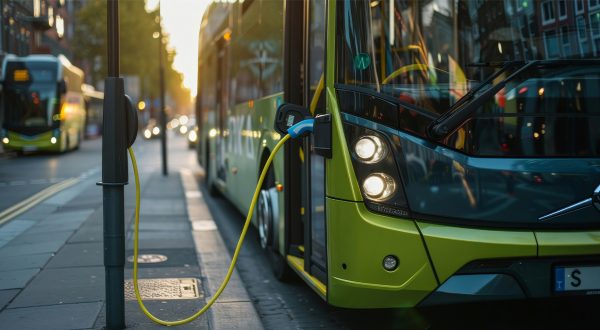Sweden has emerged as a champion of innovation in Europe. And this has not been by chance. With strong R&D investment and the necessary political will, the country has given innovators a warm welcome, with particularly strong positions in energy transition and electric mobility.
![]()
What do the spanner, the pacemaker, the Tetrapak packaging system, ball bearings, zips and Skype all have in common? Sweden, of course. Or more precisely, the capacity for innovation in a country of only just over 10 million people.
According to the Global Innovation Index, Sweden is one of those rare countries consistently ranked as one of the top three most innovative economies in the world. In its most recent ranking, published in February 2021, the Bloomberg Innovation Index classed Sweden as the fifth most innovative country in the world.
This is backed up in the 2020 edition of the European Commission’s European Innovation Scoreboard. And according to the OECD, only Israel, South Korea and Taiwan outstrip Sweden in terms of research and development spending.
A vast, sparsely populated country
As the Swedish diplomats Veronika Wand-Danielsson and Robert Wentrup wrote in an article entitled Innovation through internationalisation: the case of Sweden, published in the journal Géoéconomie in 2016, one explanation for this success is that “Sweden’s geographical location and its openness to the world, manifest in its early commitment to international trade, have played a leading role […] and will continue to do so.”
“Sweden’s geographical location and its openness to the world have played a leading role in its capacity for innovation, and will continue to do so”
According to the authors, Sweden’s vast territory and small population may explain the numerous inventions and innovations created within its borders. For example, during the latter half of the 19th century, Lars Magnus Ericsson, founder of the eponymous company, created telecommunications systems that enabled people to communicate remotely rather than having to traverse Sweden’s immense forests. The same, now international, company is no stranger to developing other new technologies in the country, notably the internet and the rollout of broadband.
Digital strength
In fact, digital has become one of Sweden’s key strengths. In November 2021, the European Commission’s Digital Economy and Society Index (DESI), which reviews different countries’ progress in this area, once again placed Sweden in the leading group, in third place behind Denmark and Finland.
Stockholm is also second in the world after Silicon Valley in terms of technology hubs per capita. Sweden boasts the largest ICT cluster in Europe (third-largest in the world), Kista Science City. This is unsurprising given the sheer number of leading web innovations to emerge from Sweden, including Skype, Spotify, King, Mojang, Klarna and Truecaller.
In 2017, Sweden’s internet penetration rate was already one of the world’s highest (95%) according to the DESI (Digital Economy and Society Index) report published by the European Commission. But the government has plans to roll out ultrafast (1 Gbps) broadband across 98% of Swedish territory by 2025.
Six priority areas for AI
The electronics industry alone (photonics, robotics, digital engineering and nanotechnology) represents 17.5% of added value in Swedish industry. Sweden is placed ahead of the United States, Switzerland and the Netherlands in the ranking of countries most favourable to the industrial IoT (IIoT).
In 2018, a report from the Swedish innovation finance agency, Vinnova, identified the main areas where the application of artificial intelligence could consolidate the innovating power of Sweden’s businesses: industrial development, transport and travel, sustainable and smart cities, services, safety, and health.
With a focus on health in particular, it was at Umeå University in northern Sweden that the French 2020 Nobel chemistry laureate, Emmanuelle Charpentier, discovered Crispr‑Cas 9, a system that allows DNA cleavage at a precise location in the genome.
Disrupting energy
This innovative force finds applications in numerous different sectors, energy transition being a good example. The Swedish market is one of the most advanced in terms of energy transition. Sweden has one of Europe’s highest shares of renewable energies in its electricity production: 54.6% in 2018, including 39% hydro and 11% wind. It also has ambitious long-term goals of 65% renewable energy in final consumption by 2030, and 100% by 2040.
Swedish innovation in this area begins with the design of buildings, based on the principle of “prosumption”, which considers each person or entity as both a producer and consumer of energy. Energy surpluses generated by households or buildings, for example from solar panels, wind turbines or biomass, are used to supply the local or national distribution network.
Today, with some 500 urban heat systems across the country, this local production has the advantages of limiting transmission costs and reducing strain on the network. Hyllie, a district of Malmö designed in 2010 as a “smart city of the future”, gets all its energy locally from biogas, biomass, solar, waste and wind. The whole system works through a smart network that adapts in real time to weather conditions, according to the amount of sunshine and wind available.
Omexom, the VINCI Energies brand specialising in energy infrastructure, is highly active in this pioneering market. Through its new innovation centre in Stockholm, The Hive, it has developed a wide range of expertise in everything from linking renewably generated energy with the network to electric mobility, energy efficiency and storage.
Pilot project
Sweden does seem to be one step ahead when it comes to energy transition. On the island of Gotland in the Baltic, an experiment is being conducted by the Israeli firm Electreon, with help from the VINCI Energies business unit Eitech Electro, to trial an electric induction road capable of recharging electric vehicle batteries as they travel.
Named Smartroad Gotland and installed in autumn 2020, this project will run until spring 2022, with the aim of reducing the country’s percentage of carbon gas emissions from road transport (30%). Smartroad Gotland is one of four experiments based on this technology currently under way in Sweden. Sweden plans to build around 2,000 km of induction roads at a total estimated cost of €3 billion.
Acceleration in battery recycling?
The Swedish battery specialist Northvolt produced its first 100% recycled cell on 29 December 2021. It has committed to making its batteries from at least 50% recycled materials by 2030. Construction of its recycling plant, Revolt Ett, in Skellefteå in northern Sweden – at 500,000 sq. meters, Europe’s largest battery production facility – began in October 2019. Initially, this “gigafactory” will produce 16 gigawatt hours (GWh) annually, enough to equip 300,000 electric vehicles each year. Storage capacity will double by 2023 and reach 60 GWh within a few years, enough to equip a million electric vehicles every year. The goal for 2030 is to reach 150 GWh.
08/09/2022





